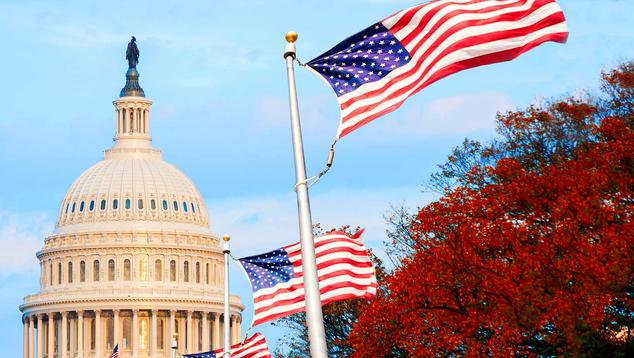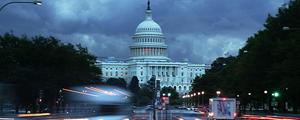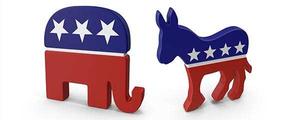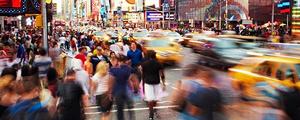Story Highlights
- Democrats more fragmented ideologically than Republicans
- "Liberal" label has had growing appeal among Democrats
- Party has moved left faster on social than economic issues
WASHINGTON, D.C. -- The policy disagreements that have stalled Democrats' passage of infrastructure and budget bills in Congress echo the mix of political viewpoints that exists among Democrats nationally. Here are five key insights about the Democratic Party's ideological diversity today.
1. The Democratic Party is more varied politically than the Republican Party.
Whereas Republicans nationwide are highly unified in their ideological outlook, with most (75%) identifying as conservative, Democrats are more fragmented. According to Gallup data collected thus far in 2021, the largest subgroup of Democrats are those who describe their political views as liberal, at 51%. The other half are mostly self-described moderates (37%), along with a small group of conservatives (12%).
Independents are also split, with just under half (48%) identifying as moderate, 30% as conservative and 20% as liberal in 2021.
| Democrats | Independents | Republicans | |
|---|---|---|---|
| % | % | % | |
| Liberal | 51 | 20 | 4 |
| Moderate | 37 | 48 | 21 |
| Conservative | 12 | 30 | 75 |
| Gallup, January-September 2021 | |||
2. Liberals have had the momentum among Democrats.
The Democratic rank and file has long encompassed a wide diversity of perspectives, but the power center has shifted from moderates -- who were the largest group in the early 2000s -- to liberals, who are the largest group today. Still, no ideological faction has enjoyed solid majority status over the past two decades.
The percentage of Democrats identifying as politically liberal increased fairly steadily from 30% in 2001 to 50% in 2017. It has remained there since then, including today's 51%. As their numbers have expanded, liberals have edged out both moderates and conservatives. But moderates have been holding steady near 38% since 2013, while conservatives have become even more scarce.
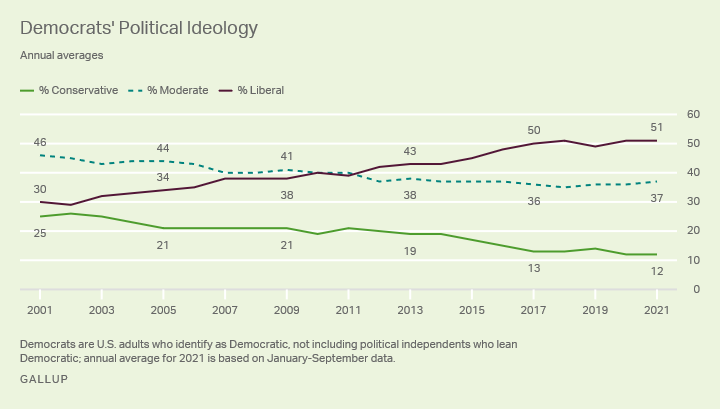
Line graph. Annual averages from 2001 to 2021 of Democrats' self-described political ideology. The percentage identifying as liberal increased from 30% in 2001 to 50% in 2017 and has since ranged from 49% to 51%. Meanwhile, the percentage conservative has fallen by half, from 25% in 2001 to 12% in 2021. The percentage moderate has also declined over this period, from 46% to 37%.
In contrast to the Democratic Party, which has had to adjust to a shifting ideological balance among its members, the solid majority of Republicans have identified as conservative for more than two decades.
3. Democrats are sharply divided on economic issues.
Each year in May, as part of its annual Values and Beliefs poll, Gallup asks U.S. adults to describe their views on economic and social issues separately, rating each as liberal, moderate or conservative.
On economic issues, Democrats nationally are about evenly split between those identifying as moderate (43%) versus liberal (41%), with 16% identifying as conservative.
Democrats' views on economic issues have been moving left over time, rising from 24% to 41% liberal. Most of this has been offset by a decline in the proportion of economic conservatives, with little change in moderate identification. As a result, the liberal wing of the party is now on par with the moderate wing.
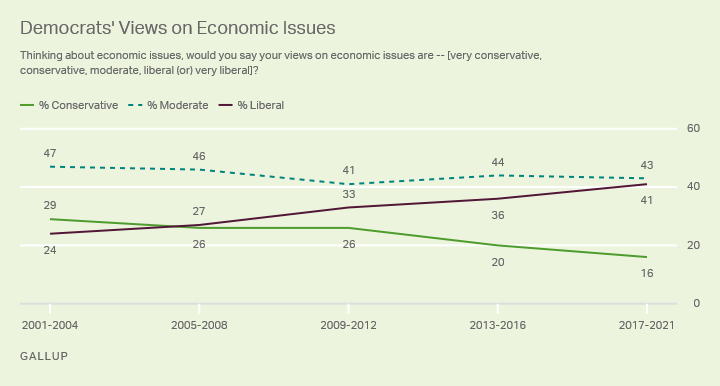
Line graph. Trend in the percentages of Democrats who consider themselves conservative, moderate or liberal on economic issues. Trend is based on multiyear groupings. The percentage identifying as liberal on economic issues has increased from 24% in 2001-2004 to 41% in 2017-2021. At the same time, the percentage identifying as conservative on economic issues has declined, from 29% to 16%, while the percentage identifying as moderate has been steadier, at 47% in the initial period and 43% most recently.
4. Democrats favor active government, but disagree on its scope.
Separately, Gallup finds that most Democrats are pro-government, in terms of wanting government to actively address issues facing the country. But they are not unified on whether government should grow to the point of potentially raising taxes.
As Gallup recently reported, 78% of Democrats say the government should be doing more to solve the country's problems, while just 18% say it is doing too many things that should be left to individuals and businesses. On this point, Democrats are as unified about wanting a more active government as Republicans are about wanting less government (80%).
| Democrats | Independents | Republicans | |
|---|---|---|---|
| % | % | % | |
| Government should do more | 78 | 38 | 15 |
| Government doing too much | 18 | 57 | 80 |
| Mixed/Depends (volunteered) | 4 | 4 | 3 |
| No opinion | 1 | 1 | 2 |
| Gallup, Sept. 1-17, 2021 | |||
Yet, in a separate question asking Americans which of three scenarios for government spending and taxes they would prefer, Democrats are closely split.
Thirty-seven percent would rather have more government services even if it means more taxes, while about as many (40%) would rather keep government services and taxes where they are now. Nineteen percent in the September 2021 poll said they would prefer fewer government services in order to reduce taxes.
| Democrats | Independents | Republicans | |
|---|---|---|---|
| % | % | % | |
| Prefer more services with more taxes | 37 | 16 | 7 |
| Prefer less services to reduce taxes | 19 | 50 | 77 |
| Keep services and taxes as now | 40 | 33 | 15 |
| No opinion | 3 | 1 | -- |
| Gallup, Sept. 1-17, 2021 | |||
Thus, for Democrats nationally, the question is not whether government should do more, but how much more and at what cost.
5. Democratic consensus has emerged on social issues.
Democrats' mixed outlook on economic issues contrasts with their decidedly left-leaning perspective on social issues. After two decades of gradual change, Democrats' views on social issues have shifted from net moderate to solidly liberal.
-
In 2001-2004, 43% of Democrats said they were moderate on social issues, whereas 36% were liberal and 21% were conservative.
-
In 2017-2021, 57% on average are liberal, while 31% are moderate and just 12% are conservative.

Line graph. Trend in the percentages of Democrats who consider themselves conservative, moderate or liberal on social issues. Trend is based on multiyear groupings. The percentage identifying as liberal on social issues has increased from 36% in 2001-2004 to 57% in 2017-2021. Over the same period, the percentage identifying as moderate on social issues has declined from 43% to 31%, and the percentage identifying as conservative has declined from 21% to 12%.
Bottom Line
The difficulty Democratic leaders have had this year in bringing progressive and centrist members of Congress together to achieve certain policy goals in some ways reflects the diverse nature of Democrats nationally.
The liberal wing of the party has had considerable momentum during this century. But despite its gains, it now represents half of all Democrats, with the other half still identifying as moderate or conservative. And while the party is now solidly liberal on social issues, it remains politically fragmented on economic issues.
Although having such a diverse political makeup has its challenges, that diversity could be helping the Democratic Party maintain its edge over Republicans in party affiliation. Even as the two parties are closely split when it comes to firm party identifiers, Democrats have held the significant edge in leaned party for most of the past two decades, including by 48% versus 42% so far this year.
To stay up to date with the latest Gallup News insights and updates, follow us on Twitter.
Learn more about how the Gallup Poll Social Series works.
